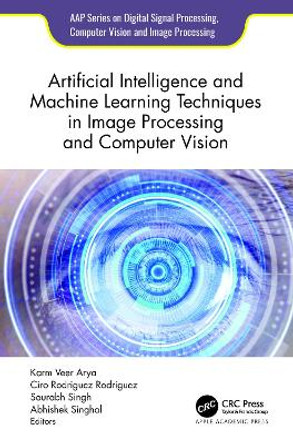Description
This book includes detailed explanations of the underlying technologies and concepts used in Artificial Intelligence (AI) and Machine Learning (ML) in the context of nuclear medicine and hybrid imaging. A diverse team of authors, including pioneers in the field and respected experts from leading international institutions, share their insights, opinions and outlooks on this exciting topic.
A wide range of clinical applications are discussed, from brain applications to body indications, as well as the applicability of AI and ML for cardio-vascular conditions. The book also considers the potential impact of theranostics. To balance the technology-heavy and disease-specific applications, it also discusses ethical / legal issues, economic realities and the human factor, the physician. Though this discussion is not based on research and outcomes, it provides important insights into the ramifications of how AI and ML could transform Nuclear Medicine and Hybrid Imaging practice.
As the first work highlighting the role of these concepts specifically in this field, rather than for medical imaging in general, this book offers a valuable resource for Nuclear Medicine Physicians, Radiologists, Physicists, Medical Imaging Administrators and Nuclear Medicine Technologists alike.
About the Author
Dr. Patrick Veit-Haibach is a dual trained radiologist and nuclear medicine physician, Associate Professor of Radiology and Molecular Imaging at the University of Toronto and the Joint Department Medical Imaging (JDMI)at the University Health Network in Toronto, Canada. He currently serves as the Director of the PET/MR Program, as Division Head Abdominal Imaging as well as the Deputy Radiologist-in-Chief at the JDMI.
He has previously been an Assistant Professor of Radiology and Nuclear Medicine at the University Hospital in Zurich, Switzerland and served as the Section Head of the PET/CT-MR and PET/MR Unit in Zurich. He completed medical school at the University of Essen, Germany. During medical school traning, he completed internships/trainings in Germany, Switzerland, New Zealand and the United States.
Prof. Dr. Ken Herrmann, MBA graduated from Charite Berlin Medical School in 2004 after completing away electives and ERASMUS exchanges in France, Switzerland, Chile and the US. In 2007 he received the Doctors Degree from Humboldt Universitat Berlin with his work "Expression and function of A1 adenosine receptors in gliomas". In 2011 he completed the executive MBA program at Universitat Zurich, Switzerland. Professor Herrmann completed his residency in Nuclear Medicine at Klinikum rechts der Isar, Technische Universitat Munchen, as well as his habilitation titled "In Vivo-Proliferation Imaging with 3deoxy-3-[18F]Fluorothymidine PET in Oncology". In May 2011 he joined as Visiting Assistant Professor and was later promoted to tenure track Associate Professor in the Ahmanson Translational Imaging Division of the Department of Molecular and Medical Pharmacology at the University of California Los Angeles (UCLA). From August 2012 to July 2016 he served as Vice Chair of the Department of Nuclear Medicine at Universitatsklinikum Wurzburg. Since August 2016 Professor Herrmann acts as Chair of the Department of Nuclear Medicine at the Universitatsklinikum Essen He also is currently the Chair of the EANM Oncology & Theranostics committee and Section Editor of the Journal of Nuclear Medicine.
Book Information
ISBN 9783031001215
Author Patrick Veit-Haibach
Format Paperback
Page Count 210
Imprint Springer International Publishing AG
Publisher Springer International Publishing AG







